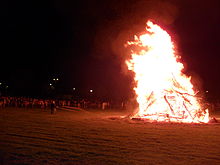photo courtesy: Kuya Adviser, catholic faith defender
Ayon sa mapandayang paninira ng mga cfd, hindi daw sinasamba ng mga INC ang Panginoong Hesus. Ito ay isa sa pandaraya ng mga CFD sapagkat ang mga Iglesia ni Cristo ay SUMASAMBA sa Panginoong Hesus hindi dahil Siya ay Diyos kundi dahil inutos ng Panginoong Diyos.
"Bakit sinasamba ng mga INC ang Panginoong Hesus gayong tao lang ang pagkakilala nila sa Kanya?Hindi ba kumukontra ito sa nasusulat na sa Diyos lamang sasamba?" Ito ang malimit na tanong ng mga maninirang hindi nagsuring mabuti tungkol sa paniniwala ng Iglesia ni Cristo. Kaya atin munang suriin ang kanilang pinagbabatayang talata sa Mateo 4:10
"Bakit sinasamba ng mga INC ang Panginoong Hesus gayong tao lang ang pagkakilala nila sa Kanya?Hindi ba kumukontra ito sa nasusulat na sa Diyos lamang sasamba?" Ito ang malimit na tanong ng mga maninirang hindi nagsuring mabuti tungkol sa paniniwala ng Iglesia ni Cristo. Kaya atin munang suriin ang kanilang pinagbabatayang talata sa Mateo 4:10
“At si Jesus ay sumagot at sinabi sa kaniya, Nasusulat, Sa Panginoon mong Dios sasamba ka, at siya lamang ang iyong paglilingkuran.”
Sa biglaang pagbasa mo maiisip mo nga naman na hindi nga tao ang Panginoong Hesus sapagkat ang sabi ay "Diyos lamang ang paglilingkuran o sasambahin". Ngunit atin munang suriin ang mga sinundang talata upang malaman natin kung bakit ganon ang sinabi ng Panginoong Hesus sa Mateo 4:8-9
"Pagkatapos, dinala naman siya ng diyablo sa isang napakataas na bundok at ipinakita sa kanya ang lahat ng kaharian sa daigdig at ang kapangyarihan ng mga ito. Sinabi ng diyablo sa kanya, “Ibibigay ko sa iyo ang lahat ng ito kung magpapatirapa ka at sasamba sa akin.”
Sa ating nabasa, ang nais palang ipabatid ng Panginoong Hesus ay "hindi si satanas ang makapangyarihan at dapat sambahin kundi ang Dios".
Ngayon suriin naman natin kung bakit nga ba dapat sambahin ang Panginoong Hesus. Sa talatang Hebreo 1:4-6 ganito ang ating mababasa
“Na naging lalong mabuti kay sa mga anghel, palibhasa'y nagmana ng lalong marilag na pangalan kay sa kanila. Sapagka't kanino nga sa mga anghel sinabi niya kailan man, Ikaw ay aking Anak, Ikaw ay aking ipinanganak ngayon? at muli, Ako'y magiging kaniyang Ama, At siya'y magiging aking Anak? At muli nang dinadala niya ang panganay sa sangkalupaan ay sinasabi, At sambahin siya ng lahat ng mga anghel ng Dios.”
Dito mapapansin natin na pati ang mga anghel ay dapat na sumamba sa ating Panginoong Hesus. Sasabihin naman ng mga naninira sa INC, hindi daw kasama ang tao sa talatang yan na dapat sumamba sa Anak. Ituloy natin ang pagsusuri kung saan mababasa na marapat sambahin ng tao Panginoong Hesus sa talatang Filipos 2:9-11 ganito ang nakasaad
“Kaya siya naman ay pinakadakila ng Dios, at siya'y binigyan ng pangalang lalo sa lahat ng pangalan; Upang sa pangalan ni Jesus ay iluhod ang lahat ng tuhod, ng nangasa langit, at ng nangasa ibabaw ng lupa, at ng nangasa ilalim ng lupa, At upang ipahayag ng lahat ng mga dila na si Jesucristo ay Panginoon, sa ikaluluwalhati ng Dios Ama.”
Sa English:
"Because of that obedience, God lifted him high and honored him far beyond anyone or anything, ever, so that all created beings in heaven and on earth—even those long ago dead and buried—will bow in worship before this Jesus Christ, and call out in praise that he is the Master of all, to the glorious honor of God the Father."
Mapapansin natin ang sabi ay "all knees" o "lahat ng tuhod". Diyan natin malalaman na kasama ang tao sa dapat na sumamba sa Panginoong Hesus. Tangi riyan, ano pa ang talatang nagsasabi kung ano o sino pa ang dapat sambahin, basahin natin sa talatang Lucas 11:1-2 ganito ang mababasa
“At nangyari, nang siya'y nananalangin sa isang dako, nang siya'y matapos, ay sinabi sa kaniya ng isa sa kaniyang mga alagad, Panginoon, turuan mo kaming manalangin, na gaya naman ni Juan na nagturo sa kaniyang mga alagad. At sinabi niya sa kanila, Pagka kayo'y nagsisipanalangin, inyong sabihin, Ama, Sambahin nawa ang Pangalan mo. Dumating nawa ang kaharian mo”
Pansinin natin ang banggit na "SAMBAHIN nawa ang PANGALAN mo" at balikan din natin ang talatang Hebreo 1:4 kung saan mababanggit ang “siya'y binigyan ng PANGALANG lalo sa lahat ng pangalan” . Sino ba ang nagbigay at sino ang pinagbigyan ng PANGALANG ito? Sa talatang Juan 17:11 ay ganito ang mababasa
“At ngayon, ako’y papunta na sa iyo; iiwanan ko na ang sanlibutang ito, ngunit sila ay nasa sanlibutan pa. Amang banal ingatan mo sila sa pamamagitan ng kapangyarihan ng IYONG PANGALAN, ANG PANGALANG IBINIGAY MO SA AKIN, upang kung paanong ikaw at ako ay iisa, gayundin naman sila’y maging isa.”
Ang sabi ng Panginoong Hesus "Amang banal...IYONG PANGALAN, ANG PANGALANG IBINIGAY MO SA AKIN" na ang sabi ay "SAMBAHIN NAWA ANG PANGALAN MO"
Ano ang pangalang ibinigay?Ating basahin sa talatang Gawa 4:10-12 ganito ang nakasaad
“Talastasin ninyong lahat, at ng buong bayan ng Israel, na sa PANGALAN NI JESUCRISTO ng taga Nazaret, na inyong ipinako sa krus, na binuhay ng Dios na maguli sa mga patay, dahil sa kaniya ay nakatindig ang taong ito sa inyong harap na walang sakit. Siya ang bato na itinakuwil ninyong mga nagtayo ng bahay, na naging pangulo sa panulok. At sa kanino mang iba ay walang kaligtasan: sapagka't walang ibang PANGALAN sa silong ng langit, na ibinigay sa mga tao, na sukat nating ikaligtas”
Bakit nga ba binigyan ang Panginoong Hesus ng gayong PANGALAN? balikan natin ang Filipos 2:9-11
“At upang ipahayag ng lahat ng mga dila na si Jesucristo ay Panginoon, SA IKALULUWALHATI NG DIYOS AMA.”
Malinaw na sa atin kung bakit dapat sambahin ang Panginoong Hesus, ito ay dahil utos ng Diyos para sa Kanyang kaluwalhatian. Malinaw na din na sinasamba ng Iglesia ni Cristo ang Panginoong Hesus hindi dahil Siya ay Dios. Malinaw din ang paninira ng mga kulang sa pagsusuri na mga catholic faith defenders. Kasihan sana kayo ng Espiritu Santo at palambutin sana ang inyong puso upang makaunawa.






